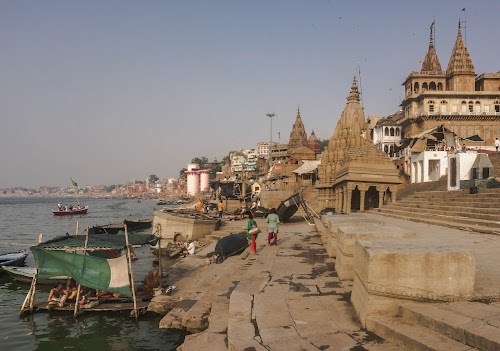
Scindia Ghat
Varanasi, India
- Capture the ghat's unique architecture.
- Explore the leaning Shiva temple.
- Observe cremation rituals respectfully.
- Take a boat ride on the Ganges.
- Wander through the narrow lanes.
- Witness Ganga Aarti from boat.
Known for:
Description:
Scindia Ghat, also known as Shinde Ghat, is one of the most visually striking ghats in Varanasi. It's easily recognizable by its partially submerged Shiva temple, a testament to the ghat's structural instability and the powerful forces of the Ganges. The ghat offers a unique perspective on the river and the surrounding cityscape. While not as crowded as some of the other ghats, Scindia Ghat provides a more contemplative atmosphere. Visitors can observe the daily rituals, witness the cremation ceremonies (from a respectful distance), and soak in the spiritual energy of Varanasi. The leaning temple is a photographer's delight, and the narrow lanes behind the ghat offer a glimpse into the traditional life of the city. Beware of slippery steps and monkeys!
History:
Scindia Ghat was built in 1830 by the Scindia family of Gwalior. Shortly after its construction, the ghat partially collapsed, leading to the submersion of a Shiva temple that was part of the structure. This incident is attributed to the ghat being built with excessive ambition and not being able to handle the load. The leaning temple is now a prominent feature of the ghat and a reminder of the power of nature. The ghat is named after the Scindia family, who were prominent rulers in central India. The area around Scindia Ghat is also known for its narrow lanes (galis) and ancient houses, some of which are associated with religious figures and scholars. The ghat continues to be an important site for Hindu rituals and cremation ceremonies.